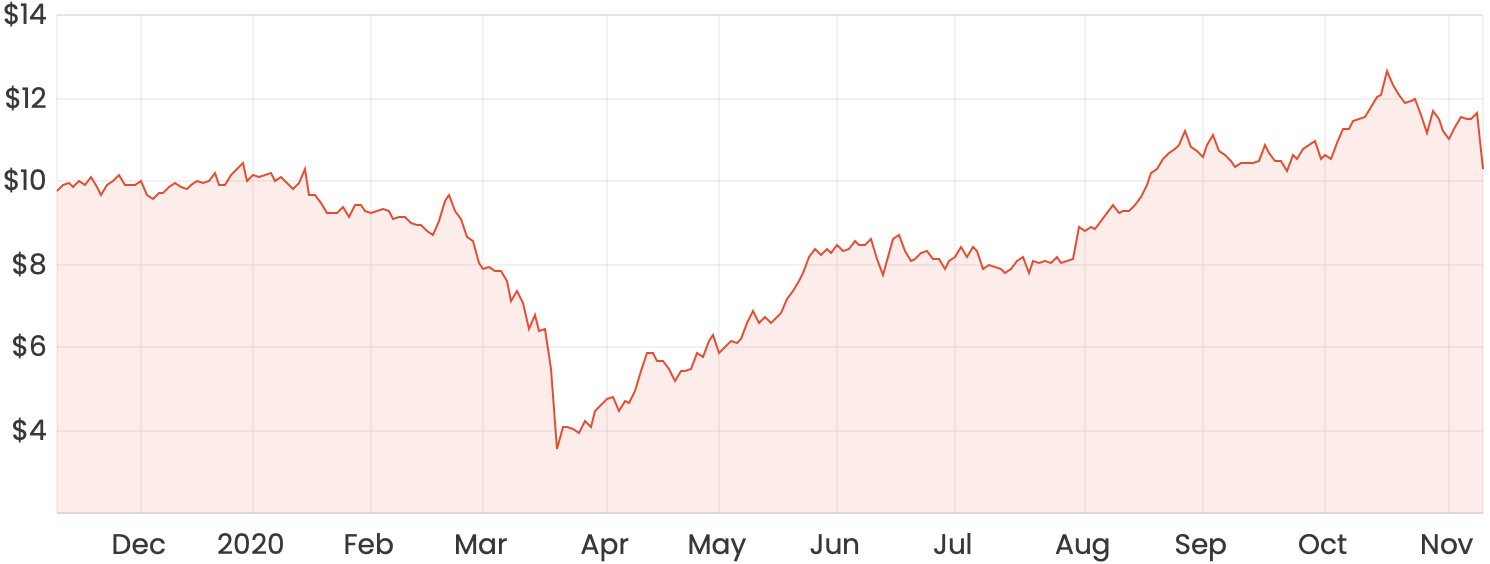Super Retail Group Ltd (ASX: SUL) could be up there as an ASX share that has benefitted the most from COVID-19 related lockdowns.
The Super Retail share price had a great run since March, but has pulled back about 18% since August. Is now a good time to buy Super Retail shares?
SUL share price chart

What does Super Retail Group do?
Super Retail Group is an ASX retailer with brands across automotive, sports, and outdoor leisure in Australia and New Zealand.
Many Aussies would be familiar with most of Super Retail’s four brands, which are Rebel Sport, Boating Camping Fishing (BCF), Supercheap Auto, and Macpac.
Effects of COVID-19
Super Retail shares got sold off significantly in March and got down to around the $3 mark at one point. The group focused its operations around its online channels, which were enough to offset the loss of revenue from its physical stores.
All of its brands were in the perfect position to take advantage of lockdowns and travel restrictions. In FY20, Macpac was the only brand to underperform. Management attributed this to Australia’s recent summer bushfires, which reduced the number of people hiking and camping.
Supercheap Auto was able to benefit from a shift to the second-hand car scene as consumers moved away from the new car market.
Rebel was able to take advantage of most commercial gyms closing, which encouraged fitness enthusiasts to purchase equipment for their home gyms. Meanwhile, families who might’ve spent money on overseas holidays might’ve bought products at BCF to prepare for a domestic holiday instead.
In FY20, group online sales increased by 44%, representing 10% of total group sales. On the whole, total group sales increased by 4.2% to $2.83 billion.
Can Super Retail keep this momentum up?
Super Retail has clearly performed well, but the age-old question is concerned with how the company will continue to perform as the economy opens up further and international travel returns to normal levels.
I think Super Retail is a strong, defensive play and it seems unlikely to me that any of its segments will seriously underperform in the long-term. If a travel bubble with New Zealand were to occur, I would anticipate an uptick through the group’s Macpac segment, as it specialises in outdoor clothing similar to Kathmandu Holdings Ltd (ASX: KMD).
I would also anticipate that while we still have international travel restrictions (excluding New Zealand), this will continue to be a tailwind for the group, especially for its Supercheap Auto and BCF brands.
Even after international travel has resumed, I’d like to think that some of those consumers who have recently gotten into home fitness or DIY car repairs will continue these habits even after all restrictions are completely lifted. If this is the case, additional brand awareness could result in some recurring revenue in the future.
Super Retail has a strong history of being able to grow its earnings over time, and I don’t think its recent sales growth was brought on as a once-off event which would see sales figures stagnate in future years.
Is it time to scoop up Super Retail shares?
Super Retail currently trades on a price-earnings ratio of 21 based on FY20 earnings. A little expensive, however, some analyst estimates for FY21 earnings growth are pretty ambitious, so the high price tag might be justified.
The company’s market capitalisation and sales are pretty much the same at around $2.8 billion, giving shares a price to sales (P/S) ratio of close to 1. It’s interesting that shares trade on such a low P/S ratio, yet relatively high P/E ratio.
Personally, I’m not a buyer of Super Retail shares right now. It’s currently trading at a historically high P/E ratio that has been quite volatile over these last few years. Instead, I’ll monitor the Super Retail share price and try to pick up some shares if they become a bit cheaper.
At the time of writing, the Super Retail share price has dropped more than 10% today on the back of a promising COVID-19 vaccine. I think it would be wise to wait and see if ASX retail shares dip further from here.
Admittedly, the company does have a strong track record of paying out an attractive dividend to shareholders. In FY20, it paid out 19.5 cents per share. However, it has historically paid an annual dividend of around 50 cents per share, which translates to a dividend yield of just under 5%.
I think there are some other options that have a bigger runway for growth. If you’re looking for ASX retail exposure, I really like Baby Bunting Group Ltd (ASX: BBN) shares at the moment, which I recently wrote about here.









